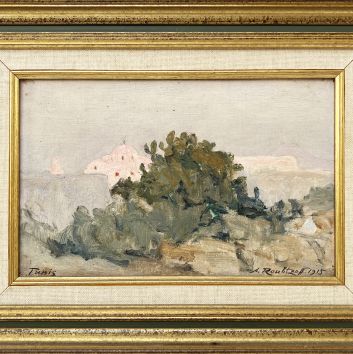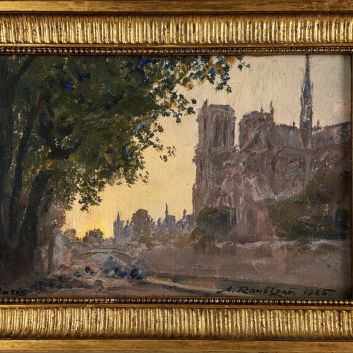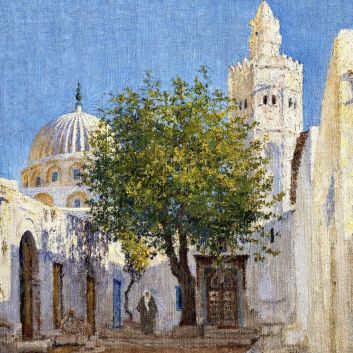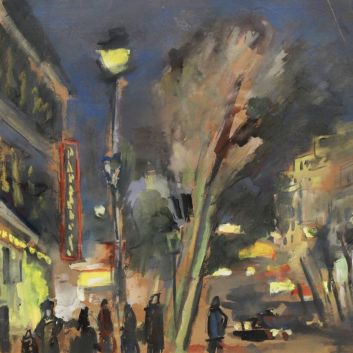Rating and value of paintings and drawings by Constantin Korovine

If you own a work by or after Constantin Korovine and would like to know its value, our state-approved experts and auctioneers will be happy to offer you their expert appraisal services.
Our specialists will carry out a free appraisal of your work, and provide you with a precise estimate of its current market value.
Then, if you want to sell your work, we'll point you in the right direction to get the best possible price for it.
Constantin Korovine's artist rating and value
Korivine is a Russian-born painter who is relatively unknown to the general public. He leaves behind a unique artistic repertoire characteristic of Russian post-impressionism.
This legacy consists of paintings, mostly oils on canvas. Today, prices for his works are skyrocketing under auctioneers' gavels.
His paintings and other works are particularly prized, especially by European and American buyers, and the prices at which they sell on the art market range from €50 to €1,649,740, a considerable delta but one that speaks volumes about the value that can be attributed to Korovine's works.
In 2020, a predominantly green polychrome composition dating from 1923 sold for €1,101,830 at Sotheby's, against an estimate of between €224,840 and €337,290.
Order of value from a simple work to the most prestigious
Technique used | Results |
|---|---|
Drawing - watercolor | 50 to €70,750 |
Oil on canvas | From €191 to €1,649,740 |
Response in less than 24h
Style and technique of artist Constantin Korovine
Constantin Korovine's painting is rooted in a free, vibrant style, in which the brushstroke is fragmented into bursts of color, capturing the fleeting variations of light.
Heir to the teachings of his master Vasily Polenov, he rejected the rigors of drawing in favor of an immediate, almost instinctive execution, reflecting his attachment to Impressionist principles.
But far from a simple optical transcription, his palette, dense and saturated, pushes color to a dramatic intensity that heralds the exuberance of Post-Impressionism.
His lively brushwork, unencumbered by academic constraints, shapes forms through juxtapositions of pure hues, giving his compositions a thrilling energy.
In both his theatrical scenes and urban landscapes, he favors an open composition, where movement takes precedence over rigorous construction.
His art, nourished by the artistic effervescence of Moscow and French pictorial research, finds a balance between spontaneity and chromatic mastery, delivering a vision of the world where light, omnipresent, seems to animate the very matter of the painting.
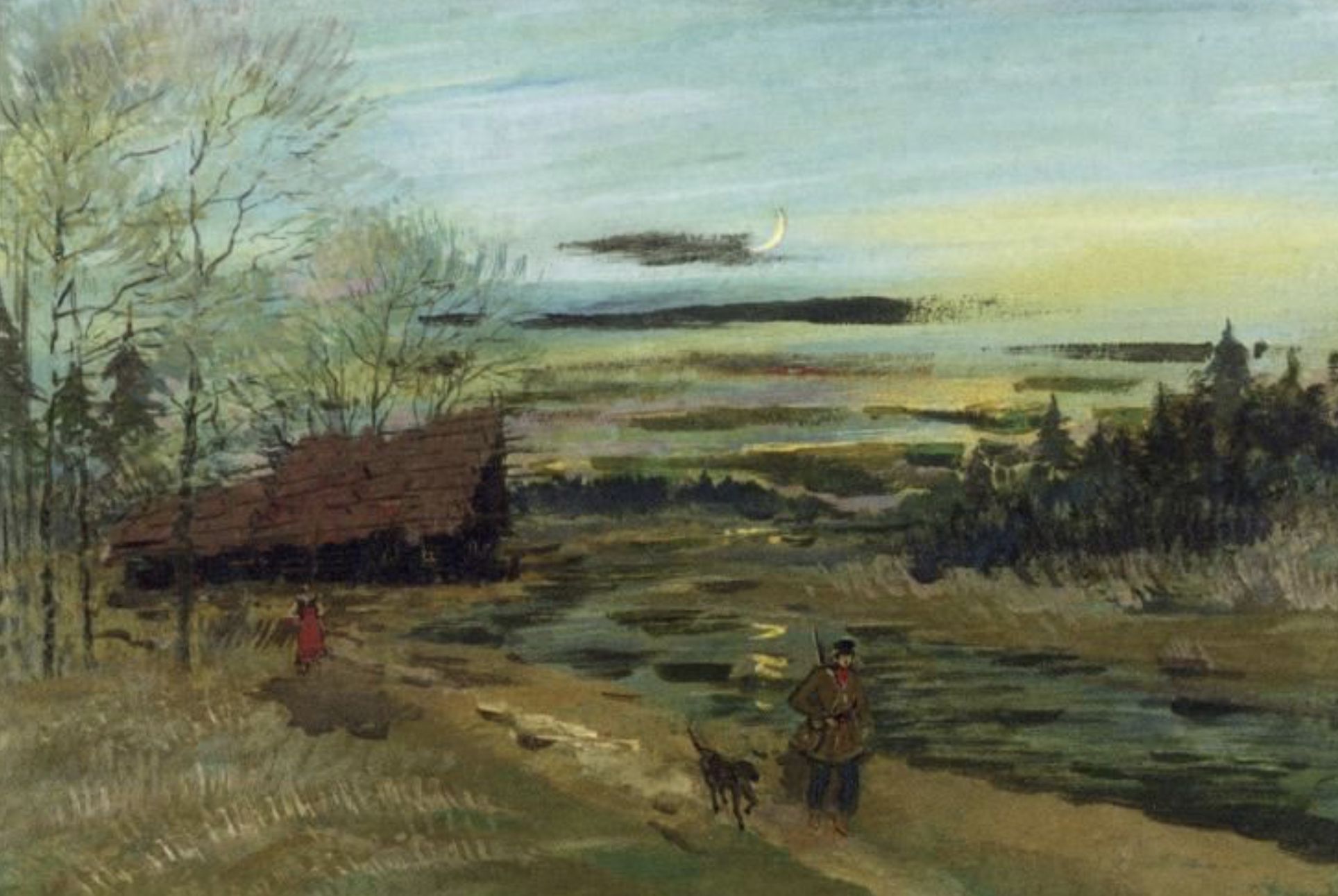
The life of Constantin Korovine
Constantin Korovine was born in 1861 in a Russia in the throes of change, into a cultured family whose artistic influence was felt from childhood.
Trained at the Moscow School of Painting, Sculpture and Architecture, he learned academic principles while absorbing the effervescence of the realist and impressionist currents that were transforming the European painting scene.
A pupil of Vassili Perov and Savrassov, he developed an approach in which light and chromatic vibration took precedence over descriptive rigor.
From the 1880s, he frequented the Cercle des Ambulants before evolving towards a freer aesthetic, marked by French influences, notably those of Monet and Renoirwhom he discovered during his stays in Paris.
His bold use of color and atmospheric treatment of materials placed him at the heart of the renewal of Russian painting, prefiguring the rise of modernism.
A close friend of Serge de Diaghilev, he took part in the Ballets Russes, designing sets in which color became a narrative element in its own right.
Settling in France in the 1920s, he continued his plastic research, but his work was gradually eclipsed by the triumphant avant-garde.
He died in 1939, leaving a body of work in which the dissolution of form and the explosion of the light spectrum heralded the boldness of the post-impressionist currents.
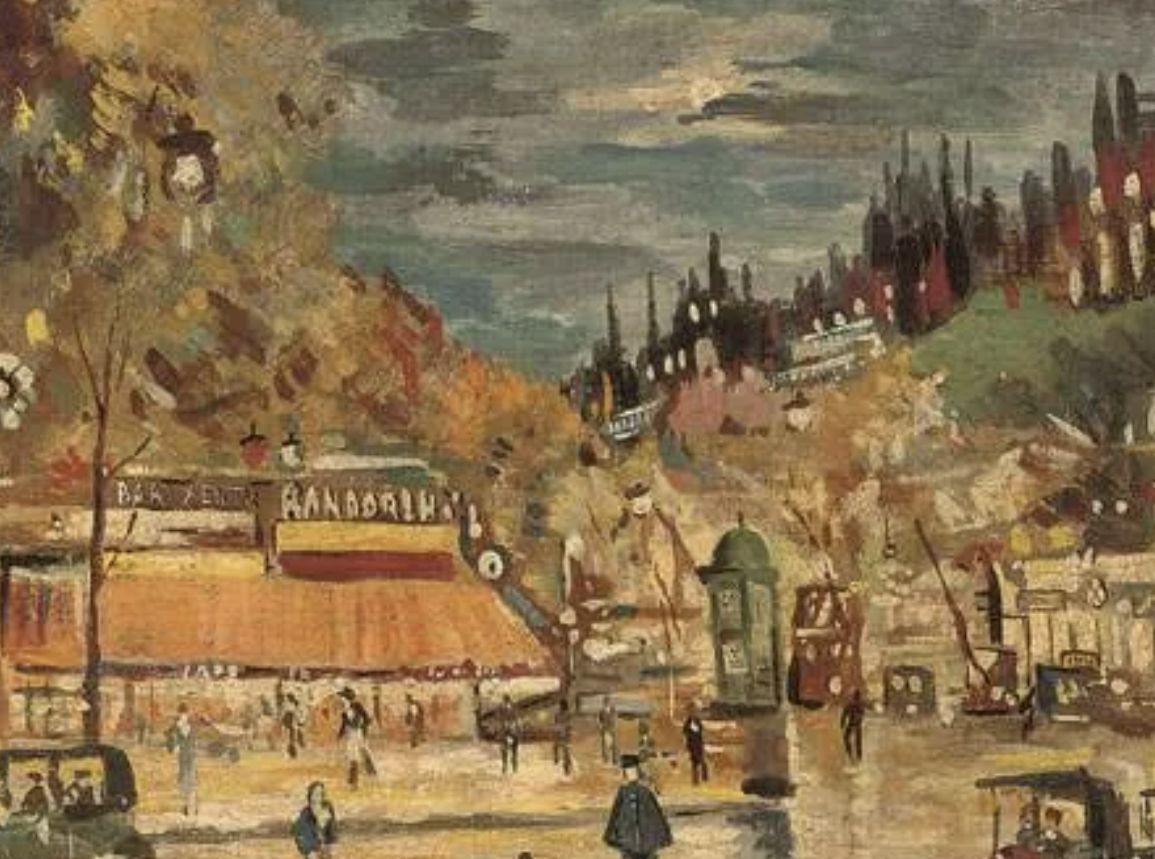
Focus on Winter twilight, Constantin Korovine
In Crépuscule en hiver, Constantin Korovine deploys a vibrant palette in which shades of blue, gray and ochre intertwine in a thick, almost moving pictorial material.
The landscape, a snowy Russian village bathed in fading light, is imbued with an atmosphere that is both silent and quivering.
The rapid, sometimes cross-hatched brushstrokes fragment volumes and sculpt space into broad planes of color, giving the whole an internal dynamic akin to Impressionist research.
The reflections of sky on snow, treated in subtle gradations, create a chromatic dialogue in which air and earth seem to merge.
Through this pictorial treatment, Korovine does not limit himself to a faithful transcription of the motif, but seeks to capture the very essence of the landscape, its very breath.
Far from being a simple, uniform surface, snow is charged with colored vibrations, absorbing and restoring the nuances of the sky.
The diffused light spreads in irregular strokes that blur contours and dilute shapes, suggesting the imperceptible shift from day to night.
This dissolving effect, achieved by superimposing thin layers of paint and a nervous gesture, gives the scene an atmospheric dimension where perception prevails over strict representation.
The choice of an open composition, where the eye is not held by any central element, accentuates the sensation of immensity and silence. The absence of human figures, or their barely sketched presence, reinforces the impression of solitude in the face of sovereign nature.
Yet there's nothing hostile about this winter landscape: it vibrates with an inner warmth, perceptible in the orange glow of a snow-covered roof or the soft purple shadows that envelop the houses.
By combining the instability of the brushstroke with subtle chromatic harmony, Korovine goes beyond the simple framework of the landscape to turn it into a veritable sensory space, where the eye oscillates between the visible and the intangible.
Korovine's imprint on his period
Constatin Korovine stands out as a transitional figure between the realism inherited from the 19th century and the impressionism tinged with symbolism that marked the Russian avant-garde.
At a time when Russian painting was oscillating between rigorous academicism and daring modernism, he infused landscape art with a new sensory dimension, where light and color became the true structures of the painting.
With his fluid, vibrant brushstrokes, he liberated the representation of landscape from all formal rigidity, opening the way to a more intuitive, atmospheric approach that would influence generations of painters, from Sergei Vinogradov to Igor Grabar and Iacovleff.
His contribution was not limited to easel painting: as a theater set designer, he revolutionized stage design with his pictorial treatment of sets, where space is diluted into vast swathes of color, abolishing the boundary between foreground and depth.
This dissolution of form, this primacy given to luminous effect over the precision of drawing, already foreshadows the research of the Russian Futurists, while retaining a distinctly Slavic sensibility, where the landscape is imbued with a diffuse melancholy.
Combining Impressionist heritage with a highly personal expressiveness, Korovine's work is part of a pivotal moment in the history of Russian painting, where the quest for a national art meets Western influences in a subtle, ephemeral balance.
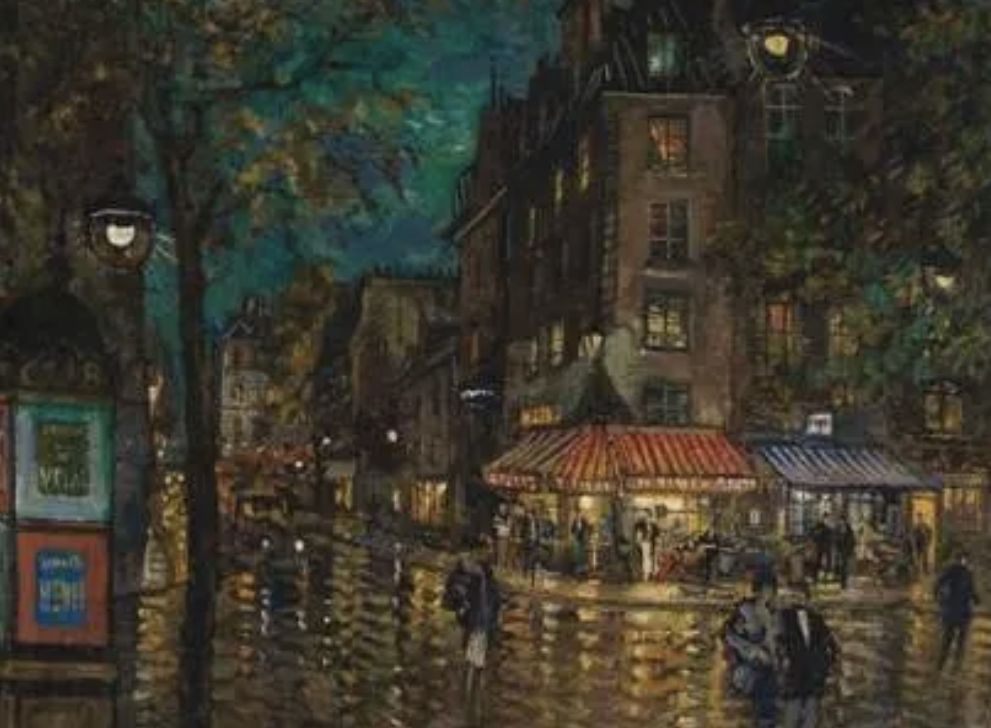
Constantin Korovine's stylistic influences
Constantin Korovine's training is part of a dual tradition, between the rigorous academicism of the Moscow School and the effervescence of the modernist currents sweeping Europe at the end of the 19th century.
A pupil of Vasili Polenov and Alexei Savrassov, he inherits a landscape tradition in which the faithful transcription of nature takes precedence over subjective expressivity.
However, his eye quickly turned away from descriptive realism to the innovations of the French Impressionists, whom he discovered during his stays in Paris.
Monet, Renoir and Pissarrothe dissolution of contours, the use of juxtaposed pure colors and the immediate capture of light variations.
But far from simply borrowing, he adapted these principles to a specifically Russian sensibility, where the more diffused Nordic light imposed a muted chromatic range, often punctuated by bright touches.
Whistler's influence, particularly in his misty harmonies and flowing compositions, can also be seen in some of his late works.
At the same time, his work for the theater brought him closer to the visionary sets of Léon Bakst and Alexandre Benois, where color becomes a dramaturgical element in its own right.
Between poetic realism and impressionism transfigured by a Slavic-sounding palette, Korovine stands at the crossroads of Western influences and a changing national tradition, building a bridge between the past and the burgeoning modernity of Russian art.
Recognizing Korovine's signature
Constantin Korovine's paintings are often signed in the lower left-hand corner. He often signs Korovine in a dark tone.

Knowing the value of a work
If you happen to own a work by or after Constantin Korovine, don't hesitate to ask for a free estimate using the form on our website.
A member of our team of experts and certified auctioneers will contact you promptly to provide you with an estimate of the market value of your work, as well as any relevant information about it.
If you're thinking of selling your work of art, our specialists will also be on hand to help you find alternatives for selling it at the best possible price, taking market trends into account.
Response in less than 24h
Related topics
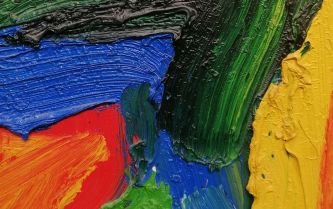
Value and quotation of works, paintings by Bengt Lindstrom
Bengt Lindstrom, a 20th-century Swedish painter, breathed new life into Nordic painting. His works are listed. Estimated in 24 hours.
Read more >
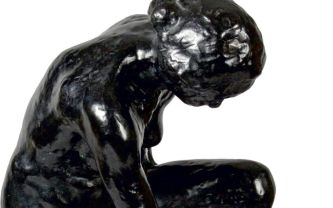
Cote et valeur 2024 des dessins, sculptures, bronzes de Jean...
Jean Carton is a twentieth-century artist who produced sculptures that are highly valued at auction. Estimated in 24h.
Read more >
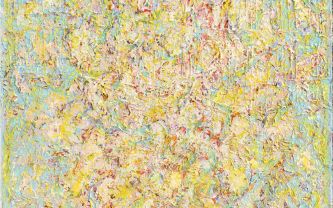
Cote et valeur des tableaux, dessins, peintures de Beauford...
Beauford Delaney est un artiste afro-américain qui a surtout produit des tableaux abstraits, redécouverts dans les années 1990 et aujourd’hui cotés.
Read more >
Secure site, anonymity preserved
State-approved auctioneer and expert
Free, certified estimates
